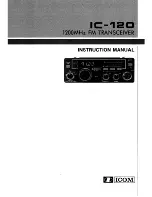
Virtex-5 RocketIO GTP Transceiver User Guide
237
UG196 (v1.3) May 25, 2007
R
Chapter 13
Design of Transitions
Each transition in the channel must be designed to minimize any negative impact on the
link performance. This section addresses the interface at either ends of a transmission line.
Transmission lines have defined and controlled characteristic impedance along their
length by definition. However, the three-dimensional structures that they interface do not
have easily defined or constant impedance along the signal path. Software tools such as 3D
field-solvers are necessary for computing the impedance that a 10 Gb/s signal sees as it
passes through these structures, while 2D field-solvers are sufficient for computing
transmission line characteristic impedance.
PCB designers can use the analyses and examples in this section to greatly accelerate the
design of such a channel. Cases not covered in this section might need further simulation
and board iterations.
Excess Capacitance and Inductance
Most differential transitions are overly capacitive. The P and N paths couple to each other,
increasing capacitance. Many transitions have a frequency response identical to that of a
lumped capacitor over a wide frequency band.
By design, adding inductance cancels this excess capacitance in many cases except when
impacted by density concerns and physical limitations. While techniques such as blind
vias, solder balls on a larger pitch, and very small via pads reduce capacitance, they are not
always feasible in a design.
Time domain reflectometry (TDR) techniques, either through simulation or measurement,
allow the designer to identify excess capacitance or excess inductance in a transition.
Time Domain Reflectometry
To make TDR measurements, a step input is applied to the interconnect. The location and
magnitude of the excess capacitance or inductance that the voltage step experiences as it
traverses the interconnect can be determined through observing the reflected signal.
A shunt capacitance (see
) causes a momentary dip in the impedance, while a
series inductance (see
) causes an impedance discontinuity in the opposite
direction. Td is assumed to be the propagation delay through the first transmission line
segment on the left. The reflected wave due to the impedance discontinuity takes 2 * Td to
return to the TDR port. If the signal propagation speed through the transmission line is
known, the location of the excess capacitance or inductance along the channel can be
calculated.
Содержание Virtex-5 RocketIO GTP
Страница 1: ...R Virtex 5 RocketIO GTP Transceiver User Guide UG196 v1 3 May 25 2007...
Страница 4: ...Virtex 5 RocketIO GTP Transceiver User Guide www xilinx com UG196 v1 3 May 25 2007...
Страница 88: ...88 www xilinx com Virtex 5 RocketIO GTP Transceiver User Guide UG196 v1 3 May 25 2007 Chapter 5 Tile Features R...
Страница 122: ...122 www xilinx com Virtex 5 RocketIO GTP Transceiver User Guide UG196 v1 3 May 25 2007 Chapter 6 GTP Transmitter TX R...
Страница 186: ...186 www xilinx com Virtex 5 RocketIO GTP Transceiver User Guide UG196 v1 3 May 25 2007 Chapter 7 GTP Receiver RX R...
Страница 200: ...200 www xilinx com Virtex 5 RocketIO GTP Transceiver User Guide UG196 v1 3 May 25 2007 Chapter 9 Loopback R...
Страница 222: ...222 www xilinx com Virtex 5 RocketIO GTP Transceiver User Guide UG196 v1 3 May 25 2007 Section 2 Board Level Design R...
Страница 256: ...256 www xilinx com Virtex 5 RocketIO GTP Transceiver User Guide UG196 v1 3 May 25 2007 Section 3 Appendices R...
Страница 312: ...312 www xilinx com Virtex 5 RocketIO GTP Transceiver User Guide UG196 v1 3 May 25 2007 Appendix E Low Latency Design R...
















































